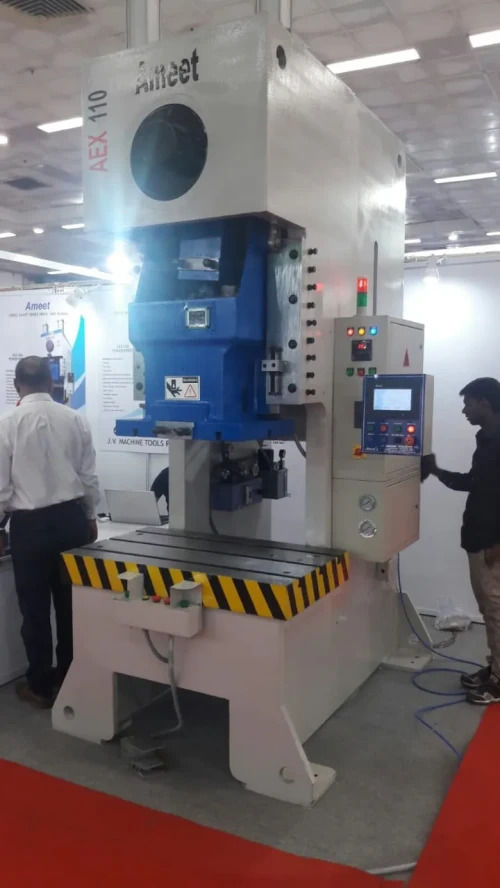Cross Shaft Power Presses
Cross Shaft Power Presses Specification
- Usage
- METAL FORMING, PUNCHING, STAMPING
- Color
- BLUE & WHITE
- Product Type
- POWER PRESS
- Weight
- 10000 Kilograms (kg)
- Voltage
- 440 Volt (v)
- Application
- METAL FORMING, PUNCHING, STAMPING
- Warranty
- 1 YEAR
Cross Shaft Power Presses Trade Information
- FOB Port
- Delhi
- Supply Ability
- 2 Per Month
- Delivery Time
- 15 Days
- Sample Available
- No
About Cross Shaft Power Presses
Cross Shaft Power Presses: Precision and Efficiency in Metal Forming
Cross shaft power presses are versatile and reliable machines used in various metal forming applications, from automotive and aerospace to construction and consumer goods. These presses offer unparalleled precision, efficiency, and productivity, making them an essential tool for manufacturers seeking high-quality output.
Key Features of Cross Shaft Power Presses:
1. Robust Construction: Heavy-duty frames and precision-engineered components ensure durability and stability.
2. Adjustable Stroke Length: Customize stroke lengths to accommodate diverse production requirements.
3. Variable Speed Control: Optimize pressing speeds for specific operations.
4. High Tonnage Capacity: Handle heavy loads with ease, up to several hundred tons.
5. Advanced Safety Features: Integrated safeguards, such as light curtains and two-hand controls, ensure operator safety.
Benefits of Cross Shaft Power Presses:
1. Increased Productivity: High-speed operation and efficient cycle times maximize output.
2. Improved Accuracy: Precise control over stroke length and speed ensures consistent results.
3. Enhanced Flexibility: Versatile design accommodates various tooling and production requirements.
4. Reduced Maintenance: Durable construction and simple maintenance minimize downtime.
5. Cost-Effective: Long lifespan and energy efficiency reduce operational costs.
Innovations in Cross Shaft Power Presses:
1. Servo-Driven Technology: Enhanced precision and energy efficiency.
2. PLC Controls: Simplified operation and advanced programming capabilities.
3. Industry 4.0 Integration: Seamless connectivity and data exchange.
4. Ergonomic Design: Improved operator comfort and reduced fatigue.
Choosing the Right Cross Shaft Power Press:
1. Determine Tonnage Requirements
2. Consider Stroke Length and Speed
3. Evaluate Safety Features
4. Assess Maintenance Needs
5. Consult with Manufacturers
Invest in a Cross Shaft Power Press for Unparalleled Metal Forming Capabilities


Price:
- 50
- 100
- 200
- 250
- 500
- 1000+
More Products in Pneumatic Power Press Category
Inclined Power Press Machine
Price 100000.0 INR / Unit
Minimum Order Quantity : 10 Units
Material : Stainless Steel
Product Type : Power Press Machine
Voltage : 110215 Volt (v)
Application : Industrial
Cross Shaft Power Press Machine
Price 125000 INR / Unit
Minimum Order Quantity : 10 Units
Material : Stainless Steel
Product Type : Cross Shaft Power Press
Voltage : 110215 Volt (v)
Application : Industrial
H Type Power Press Machine
Price 120000 INR / Unit
Minimum Order Quantity : 10 Units
Material : Stainless Steel
Product Type : H Type Power Press Machine
Voltage : 110215 Volt (v)
Application : Industrial
Pneumatic Power Press Machine
Price 130000.0 INR / Unit
Minimum Order Quantity : 1 Unit
Material : Stainless Steel
Product Type : Power Press Machine
Voltage : 110215 Volt (v)
Application : Industrial

 Send Inquiry
Send Inquiry





